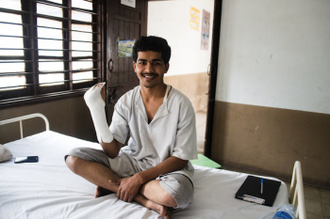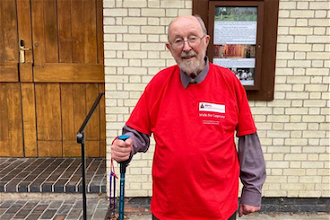Eradicating leprosy is not a pipe dream

Prakash, 22, has had reconstructive surgery for a clawed hand. Only his close family know about it. He could never tell his employers for he might be sacked because of the stigma surrounding leprosy.
World Leprosy Day will be marked on 31 January - the last Sunday of the month, chosen to coincide with the anniversary of the assassination of Mahatma Gandhi, on January 30, 1948. Gandhi's work to help people affected by leprosy is, probably, less well known than his fight to improve the plight of Dalits (untouchables).
It is 62 years since the French philanthropist and writer Raoul Follereau initiated World Leprosy Day in 1954 in his effort to raise global awareness of the diseases and make people aware that it is preventable, treatable and curable.
Yet 213,899 cases of leprosy were diagnosed globally in just 2014 (World Health Organisation statistics) - 125,758 of those were in India.
The biggest obstacle to its prevention and cure is ignorance. It is a curse, it's a result of sins committed in a past life, it can easily be caught by touch are among the many myths that result in people, routinely, being cast out by their communities. It means people hide their symptoms and fail to seek treatment for fear of being disowned by their families. More than three million people worldwide live with disabilities caused as a result of late treatment of leprosy.
Sian Arulanantham, is Head of Programmes at The Leprosy Mission England and Wales (TLMEW) and has worked on projects in Asia and Africa for more than 10 years. She said: "Eradicating leprosy is not a pipe dream and I would love to see it eradicated in my lifetime. However, this will only be possible if the disease is given greater priority by governments, and health workers are trained in diagnosis and treatment. In addition, we must bust the myths that lead to the stigma that forces people to hide their condition. These are among the biggest challenges - in both continents.
"While treating, curing and rehabilitating those affected by leprosy are a big part of our work, our focus is also very much on raising people's awareness of the treatability of this disease. Otherwise the stigma will force people to keep hiding their symptoms and they will end up disabled."
Leprosy is a chronic infectious disease caused by mycobacterium leprae (M.laprae). It is easily curable with multidrug therapy - a combination of rifampicin, clofazimine and dapsone tablets taken for six months to a year.
Leprosy is also known as Hansen's disease, after Norwegian scientist Gerhard Henrik Armauer Hansen who discovered M. Laprae in 1873. It is not hereditary or contagious and can only be caught by close, repeated contact with nose and mouth droplets from someone with untreated leprosy. It is prevalent usually in places of extreme poverty and poor hygiene.
Leprosy affects mainly the skin, peripheral nerves, upper respiratory tract and the eyes. It damages the nerves on the skin's surface leaving it without sensation or pain. As no pain is felt burns to fingers and ulcers caused by stepping on stones or glass go unnoticed and can lead to amputation, muscle paralysis and other disabilities. Blindness is also a common consequence caused by the inability to detect grit in the eye.
It is one of the oldest diseases known to mankind and people with leprosy have been stigmatized and considered to be at the extreme margins of the society. The aim of World Leprosy Day is to change this attitude and increase public awareness of the fact that leprosy can now be easily prevented and cured.
For more information about World Leprosy Sunday see: www.leprosymission.org.uk/get-involved/world-leprosy-sunday-2016.aspx


















